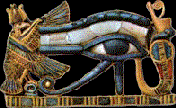The skies of 2007 are set to amaze us with the wonders of cosmic miracles. And to our great advantage, at the peak of our meteor showers, the night sky will have no visible Moon and thereby make very visible what we usually can't see. One other thing about the January Moon - it's known as "The Full Wolf Moon" of many a legend, and has been known to cause unusually strange behavior in what are usually quite normal, sedate living things. But on to hard facts:
We can look forward to four eclipses, a comet, an asteroid, meteor showers and much more.
We lost a comet in the solar glare of December, so no one really knows how its been brightening. It reached perihelion the other day (the time when a planetary body is closest to the sun) and was well inside Mercury's orbit. Who knows was will become of it. But here's what we do know:
Four eclipses will take place this year, not all visible from one place. First, a total eclipse of the Moon on the night of March 3, visible in the Northeast. On August 28 another total lunar eclipse visible from most of the US and Canada. Two weeks later, these lunar eclipses will be follwed by two partial solar eclipses, on March 19 and again on September 11. These require telescopes.
Along the West Coast, a treat. On April 17, an extremely young crescent moon, followed the very next month by great debates on what constitues a Blue Moon (which we just experienced early this month) because Americans will get to see the moon become full twice in May.
Saturn will be fantastic. All this month, visible all night and every night, the ringed planet is a splendid sight for telescopes as it remains high in the evening sky for months.
Venus is our brilliant "Evening Star" through July, passing through its stunning crescent phase, and in late August entering the morning sky.
Mercury makes its best evening appearance the end of May for the Northern Hemisphere, again in the morning during the first half of November.
Mars will grow in size to make a fine telescopic sight in December, its disc hovering between 15-16 arcseconds (trillionth of a second) across a month.
Here's a real looker: 2007 is the bicentennial year of the discovery of Vesta, the brightest of all asteroids, and will make one of its best showings ever. By the end of May, Vesta shines at magnitude 5.4 and in a dark sky is visible unaided. Look to the constellation Ophiuchus, where it will slip past the globular cluster M107 in that constellation. This will amaze the most jaded.
Although I'll keep posting events a few days before they happen, I want to list what we're in for: As previously mentioned, at the highest point in the meteor showers this year, the Moon will not be visible in the night sky, making a very spectacular, clear sight indeed. Any of these showers can produce dozens of these "shooting stars" each hour leading up to dawn. Look for Lynids on April 23, the Perseids on August 13 (remember last year's Perseids?) Orionids on October 21, the Leonids on November 18, and the eagerly awaited Geminids on the night of December 13-14. The Geminids are special because their progenitor, the comet that created them, Phaethon, will precede them in a flyby of earth December 10. I just can't believe this is happening!
Pluto makes news again this year when it participates in one of the year's most anticipated occultations (blocking of light by a celestial body) on March 18 when it passes directly in front of a 14.9 magnitude star for all the major American Southwest observatories. All the world's "big guns" will be trained on Pluto, hoping to learn more about its shrinking atmosphere as the sun's light fades, then returns into view. Telescopes as small as 10" can share in this effort.
And don't miss some spectacular lunar occultations when the crescent moon occults the Pleiades star cluster for Northwestern America on March 22. Then, on June 18, a thin sliver of a moon sneaks up on brilliant Venus in the Middle East. On the very next night, in Southwestern USA, we can watch as the crescent moon will snuff out the bright star, Regulus.
There's so much going on in 2007. I'll keep reminders posted a few days before the events, or you can just keep referring to this entry. This is all very exciting to skywatchers. The known Universe has no center, no edges. It is a glorious gift and the cosmos is often referred to as "heavenly" which I won't debate. Over half the population claims to feel "awe" when gazing at the moon. They cannot explain it. The "tides" of the liquid in our bodies are shifted by the pull of the moon, causing depressions and exhilarations alike. Those born in the Cancer constellation experience great rushes of creative passion as well as what appear to be crazed acts during full and new moons. Ask any policeman or ER worker. This dusty rock, as some are satisfied to think of it, was once a part of this planet. Not able to absorb suitable heat from the sun, for lack of gravity it could never retain water. When the earth shattered and went through its eons of many phases, there is reason to believe the moon did as well, a remnant cast off and absorbed into our orbit. Constantly bombarded by meteors, asteroids, and one so large we can see it from earth, its scarred surface looks much the same as it always did according to oldest records. We now know water existed on Mars, in what Galelio Galeli described as canali. Astrophysicists and paleontologists have found proof with the rocks of Jupiter and Saturn, thanks to the Heugens-Cassini project which also explored Jupiter's large moon, Titan. But our little Luna will remain a mystery in the hearts of man, just as it always had.
The billions of quadrants containing billions of galaxies containing billions of stars containing billions of planets, and all the continual action occuring above our heads moment by moment ... I believe if I were ever to understand the Universe in full, I would faint dead away.
In wonder.
Stats courtesy of Skywatcher, Palo Alto Journal, Sky & Telescope















































11 comments:
It is truly amazing! Do you have a telescope of your own? I've been fortunate to have friends interested in stargazing and have been taught some by them. It never ceases to amaze me.
Pam
Haven't seen the sun in DAYS. Missed seeing the comet.
Have a good week.
Barb
Wow..what an unusual entry!
I love reading and learning about this stuff, being a huge Star Trek fan of course..lol!
Dunno if I'll be able to see anything from here, but I'll definitely keep my eye out!
Thanks for your lovely comments. They really cheered me up this morning. *hugs*
Thanks for being you and may 2007 be a great year for you,
Love Stevie
xxxx
wow
noelle
Thanks Cathy for this great diary of astronomical events. I have printed the list and will be looking out throughout the year.
Kate.
http://journals.aol.co.uk/bobandkate/AnAnalysisofLife/
Wonderful posting Cathy but spare a thought for people on this side of the pond. At this time of the year all we can see is the glare of street lamps with a heavy overcast sky. No Northern Lights no Saturn and no dry days/nights. Thanks for the diary as I'll look forward to that.
Thanks for this heads-up, Cathy.
wolf moon huh now i know my hubbys problem
Thanks Cathy
Valerie
http://journals.aol.co.uk/iiimagicxx/surreality/
Man I wish I had a telescope cause I wanna see Saturn! wahhhh. lol Love, Shelly
ummm....I LOVE looking up the sky and look at all the wonders the sky always holds..but I don't have a telescope :-(
I hope you remind us days before when these wonders on the sky comes out.
Thanks,
Gem :-)
Post a Comment